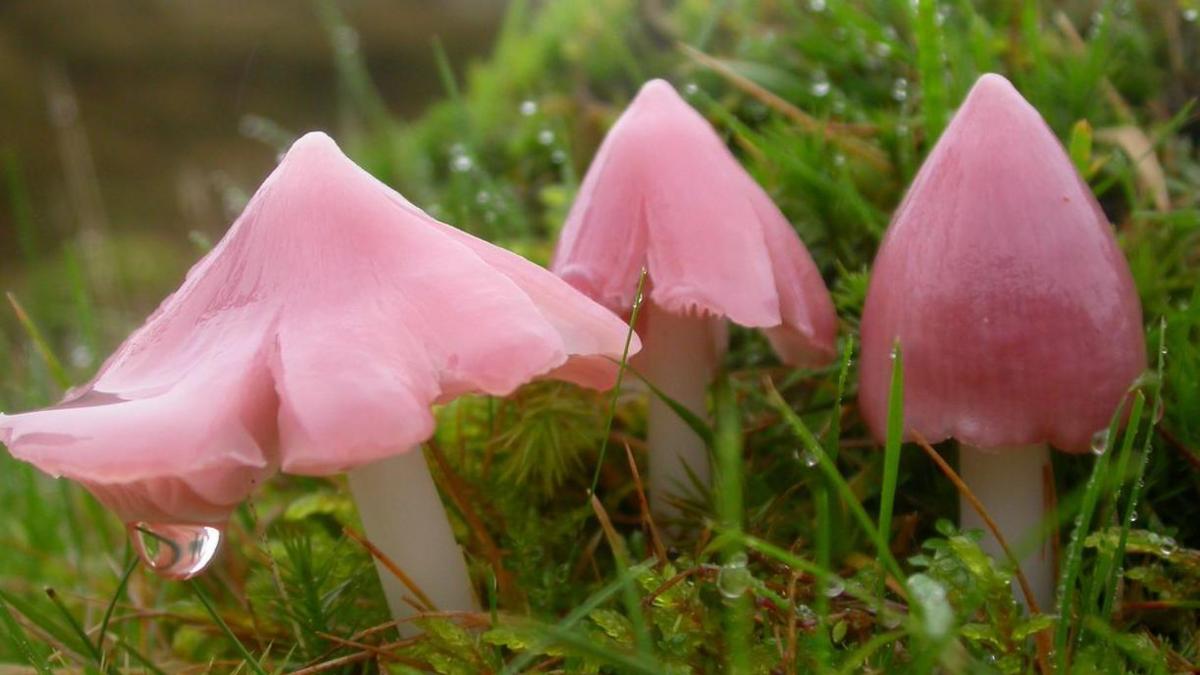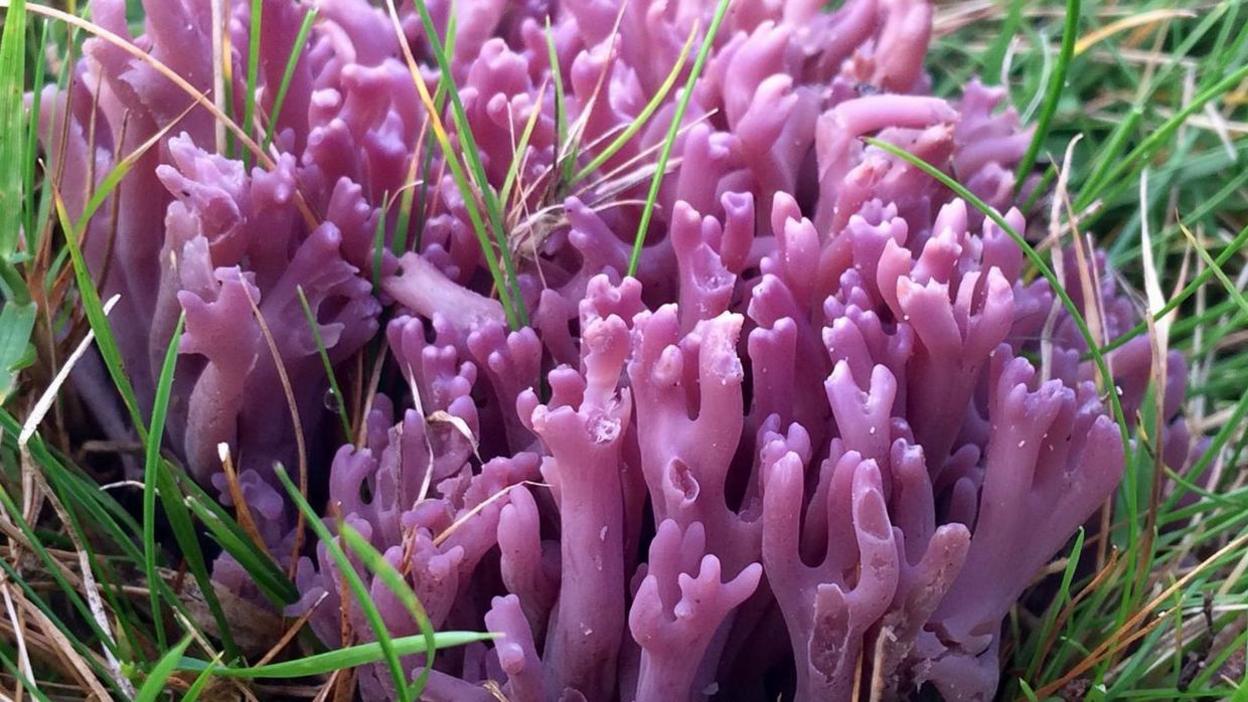Yorkshire national parks a 'hotspot' for rare fungi

Pink waxcap are often called the ballerina waxcap because their caps flare out like a pirouetting dancer
- Published
The Yorkshire Dales and North York Moors national parks are home to some of the UK's rarest mushrooms, a conservation charity has found.
Plantlife's annual survey found hundreds of new sites for pink waxcap and violet coral across the country, with North Yorkshire emerging as a "hotspot" for the fungi, the charity said.
A Plantlife spokesperson said the project made "multiple new discoveries" of the two species in cemeteries, gardens and farmland across the two national parks.
Both the pink waxcap and violet coral are listed as "vulnerable" on The Red List, a conservation status catalogue compiled by the International Union for the Conservation of Nature.
Dr Aileen Baird, Plantlife's senior conservation officer for fungi, said the results had surprised scientists and represented "a major leap in knowledge".
The data revealed 18 new locations in the UK for violet coral, a species recognised for its vibrant violet branching structure.
It also discovered 300 new locations across the country for pink waxcap, also known as the ballerina waxcap as its cap flares out like a pirouetting dancer.

Violet coral is listed as "vulnerable" by the International Union for the Conservation of Nature
The organisation has not revealed specific locations in North Yorkshire where the rare fungi were discovered.
However, Plantlife said violet coral was usually found in "unimproved grassland", with pink waxcap more often seen in western Britain, particularly in Wales on sheep-grazed acid grassland.
Dr Baird said: "These results reflect both the incredible enthusiasm for fungi and the power of citizen science.
"With more people than ever taking part in Waxcap Watch, we're gathering the essential data needed to protect these extraordinary species."
A record number of 567 surveys were completed in 2024, the charity said.
Clare Blencowe, from the British Mycological Society, said the discoveries of so many new sites for both fungi were "really impressive".
"These fungi are vital indicators of the health of our grasslands and highlight the biodiversity that exists around us in our towns, as well as our countryside," she said.
Get in touch
Tell us which stories we should cover in Yorkshire
Listen to highlights from North Yorkshire on BBC Sounds, catch up with the latest episode of Look North.